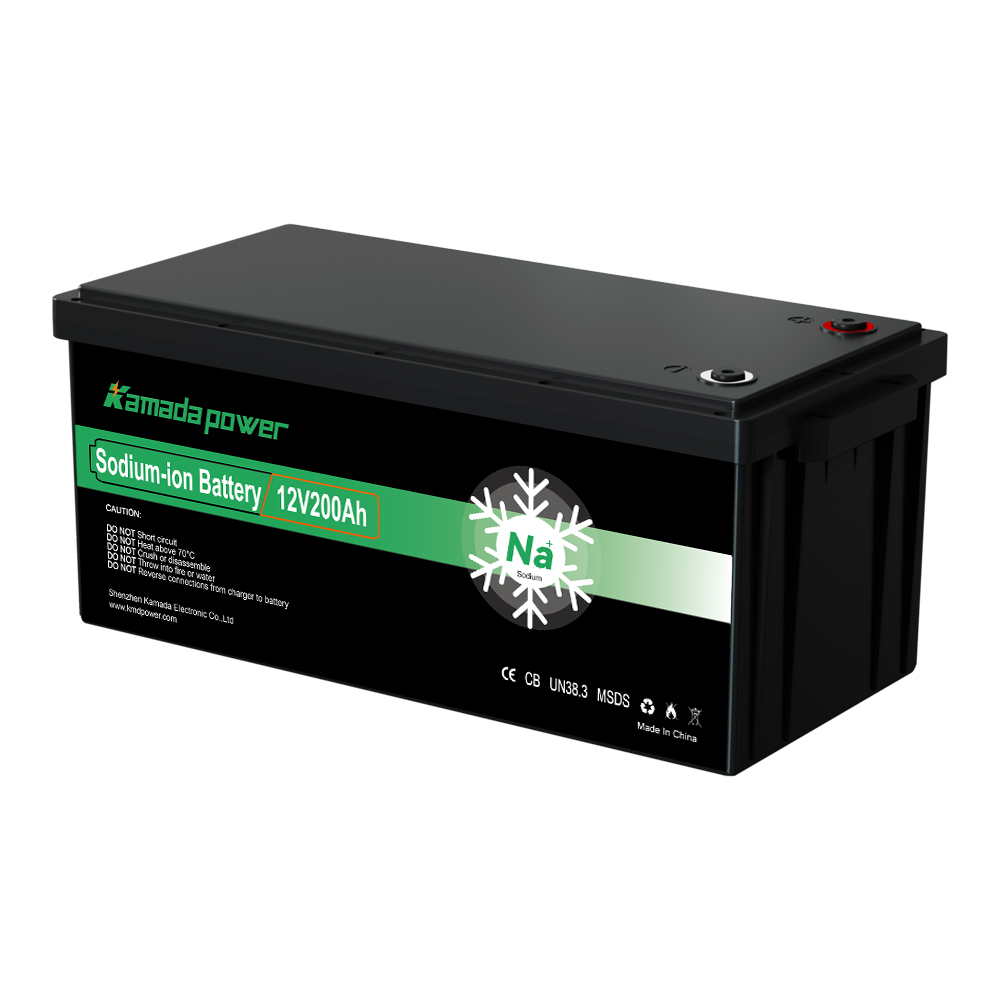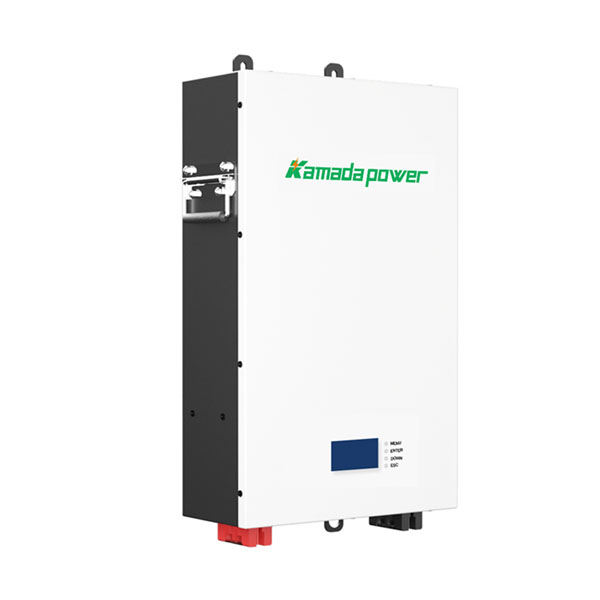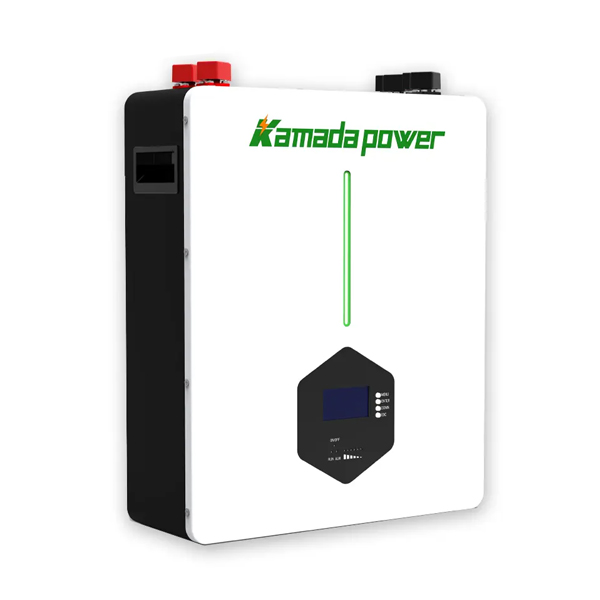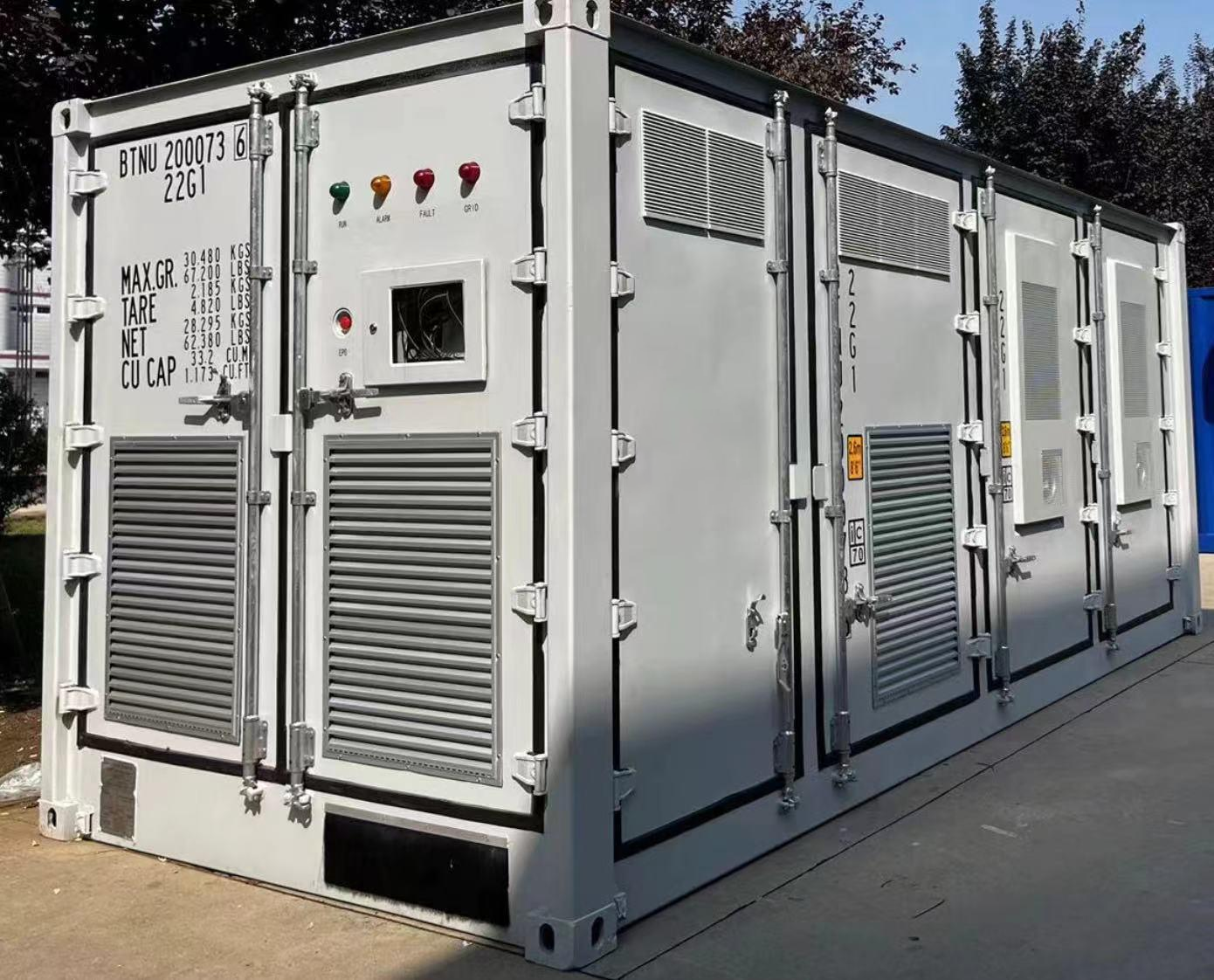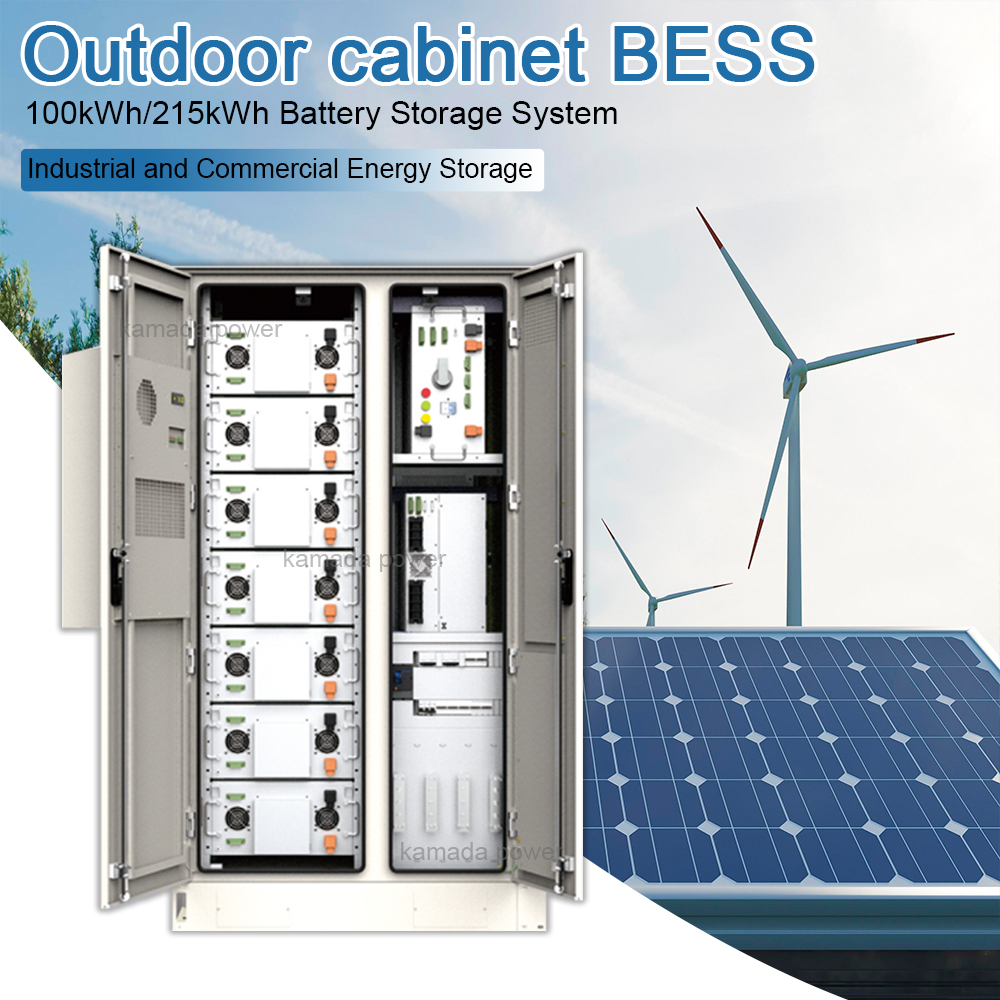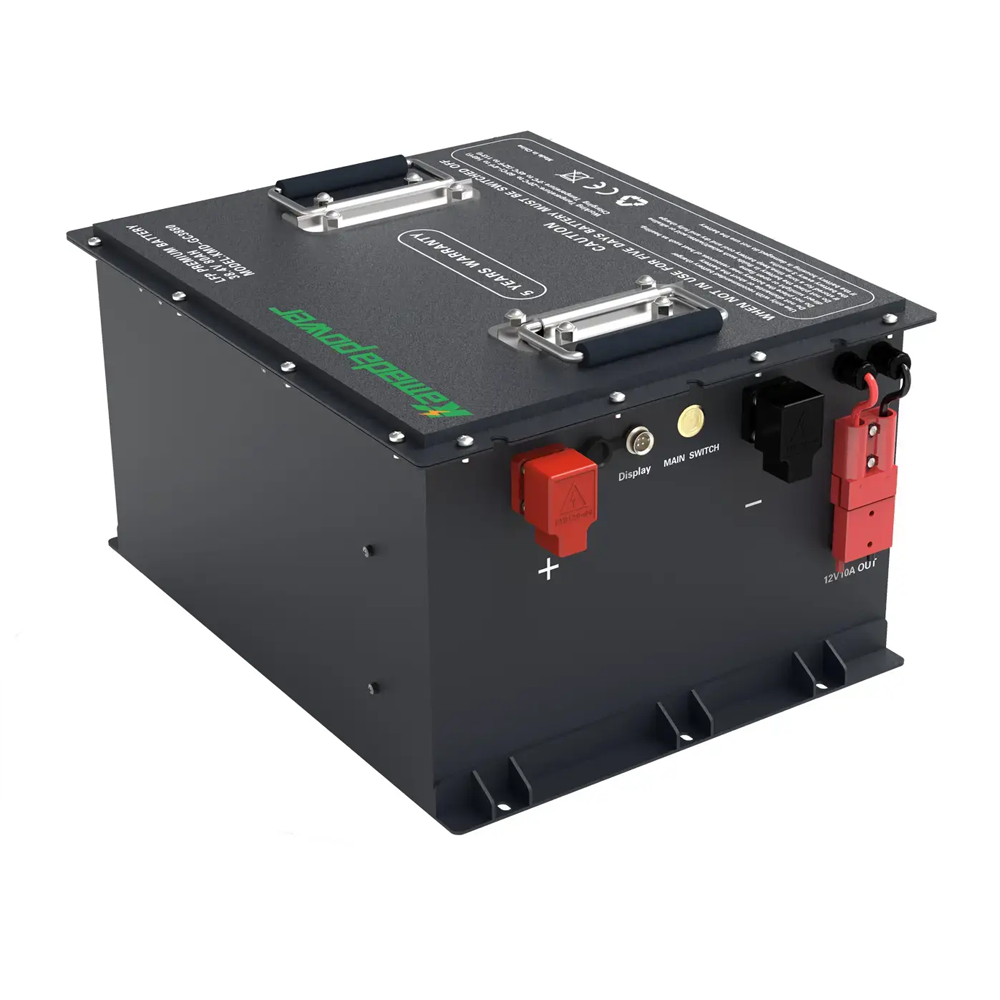Introduction
Kamada Power Commercial energy storage systems (ESS) are essential for modern energy management. They capture surplus energy generated during peak production times for later use when demand is high. 215kwh ESS can store energy in various forms—electrical, mechanical, or chemical—for later retrieval and use. These systems boost grid stability, optimize renewable energy integration, and reduce energy costs for commercial facilities by enabling efficient energy capture and release.

Key Points to Understand About 215kwh C&I Energy Storage Systems
- Functionality: 215kwh ESS store energy generated during low-demand periods and release it when demand peaks, balancing supply and demand. This balance mitigates the impact of demand spikes on the grid and enhances overall energy efficiency. According to the U.S. Department of Energy, ESS can cut grid fluctuations by up to 50% during peak periods (U.S. DOE, 2022).
- Types of Storage: Common technologies include:
- Batteries: Such as lithium-ion, known for high energy density and efficiency. The Energy Storage Association (2023) reports that lithium-ion batteries have an energy density ranging from 150 to 250 Wh/kg, making them suitable for various applications.
- Flywheels: Store energy mechanically, ideal for applications requiring short bursts of high power. Flywheel energy storage systems are known for their rapid response times and high power density, with energy densities typically around 5-50 Wh/kg (Journal of Energy Storage, 2022).
- Compressed Air Energy Storage (CAES): Stores energy as compressed air, suitable for large-scale applications. CAES systems can provide substantial energy storage with capacities reaching up to 300 MW and are effective in smoothing out supply-demand imbalances (International Journal of Energy Research, 2023).
- Thermal Storage Systems: Store energy as heat or cold, often used in HVAC systems to reduce peak energy demand. The Building Energy Research Journal (2024) notes that thermal storage can cut peak energy demand by 20%-40%.
- Benefits: ESS enhance energy resilience, reduce reliance on fossil fuels, mitigate peak demand charges, and facilitate the integration of renewable energy sources. A report from BloombergNEF (2024) highlights that integrating ESS can lower energy costs by 10%-20% annually for commercial facilities.
- Applications: These systems are utilized in commercial buildings, renewable energy plants, industrial facilities, and utility-scale installations, offering flexibility and efficiency in energy management. ESS applications can be seen in diverse sectors, including data centers, retail chains, and manufacturing plants.
Key Benefits of 215kwh Commercial Energy Storage Systems
- Cost Savings: Store electricity during off-peak hours when rates are lower and use it during peak hours to cut costs. This reduces overall electricity expenses and helps manage energy budgets more effectively. The U.S. Energy Information Administration (2023) estimates that businesses can save up to 30% on electricity costs by implementing ESS.
- Backup Power: Provide reliable backup power during outages, ensuring continuous operation of critical systems. This is crucial for businesses where downtime can lead to significant financial losses. A study by the National Renewable Energy Laboratory (2024) found that businesses with ESS experienced 40% fewer disruptions during power outages.
- Peak Demand Reduction: Lower overall electricity costs and avoid expensive peak demand charges by using stored energy during peak times. This strategic use of energy storage helps businesses optimize their energy usage. Peak shaving strategies can reduce demand charges by 25%-40% (Energy Storage Association, 2023).
- Renewable Integration: Store excess energy from renewable sources for use during high demand or low generation periods, ensuring a consistent and reliable energy supply. Integration of ESS with renewable sources has been shown to increase the utilization of renewable energy by up to 30% (Renewable Energy Journal, 2024).
- Grid Stability: Improve grid stability by balancing supply and demand, reducing fluctuations, and supporting a more reliable energy system. This is especially important in regions with high renewable energy penetration. ESS contribute to grid stability by reducing frequency fluctuations by up to 20% (IEEE Power & Energy Magazine, 2024).
- Environmental Benefits: Reduce carbon footprints and reliance on fossil fuels by integrating renewable energy sources, contributing to a sustainable future. Implementing ESS can lead to a reduction in greenhouse gas emissions by up to 15% (Environmental Science & Technology, 2023).
Increasing Energy Resilience and Security
215kwh Energy storage systems enhance resilience by providing backup power during grid outages or emergencies. By storing excess energy during off-peak hours, businesses can reduce reliance on the grid during peak times, boosting energy security. The ability to operate independently of the grid during emergencies or peak demand periods ensures a continuous power supply. Integrating renewable energy sources with storage systems further enhances resilience by providing a reliable power source independent of the grid, avoiding costly downtime and revenue losses associated with power outages.
Financial Savings and Return on Investment
When implementing 215kwh commercial energy storage systems, it’s crucial to evaluate potential financial savings and ROI:
- Reduced Energy Costs: Store electricity during off-peak hours to avoid higher peak-hour costs, leading to substantial savings on energy bills. The Electric Power Research Institute (2024) reports that businesses can achieve an average reduction of 15%-30% in energy costs through strategic ESS deployment.
- Demand Charge Management: Use stored energy during high-demand times to reduce peak demand charges, optimizing energy expenditures. Effective demand charge management can result in a 20%-35% reduction in overall energy costs (Energy Storage Association, 2024).
- Ancillary Service Revenue: Provide ancillary services to the grid, earning revenue through programs like demand response or frequency regulation. The U.S. Energy Information Administration (2023) reports that ancillary services can generate additional revenue streams of up to $20 million annually for large-scale ESS operators.
- Tax Incentives and Rebates: Utilize government incentives to lower upfront costs and improve ROI. Many regions offer financial incentives for businesses that adopt energy storage solutions. For example, the Federal Investment Tax Credit (ITC) can cover up to 30% of the initial costs of ESS installations (U.S. Department of Energy, 2023).
- Long-Term Savings: Despite significant initial investments, long-term savings in energy costs and potential revenue streams can yield substantial ROI. Businesses can achieve payback periods as short as 5-7 years (BloombergNEF, 2024).
- Environmental Benefits: Reduce carbon footprints and demonstrate sustainability commitments, positively impacting brand reputation and customer loyalty. Companies with robust sustainability practices often experience enhanced brand value and increased customer loyalty (Sustainable Business Journal, 2023).
Reducing Peak Demand Charges
215kwh Commercial energy storage systems are essential for reducing peak demand charges. By strategically using stored energy during peak demand periods, businesses can lower peak demand levels and avoid costly utility charges. This approach optimizes energy usage, enhances energy efficiency, and provides long-term cost savings. Businesses can plan their energy consumption to avoid peak times, leveraging stored energy to meet their needs.
Supporting Renewable Energy Integration
215kwh Commercial energy storage systems support renewable energy integration by storing excess energy generated from renewable sources like solar or wind power. They smooth out the intermittent nature of renewable energy, ensuring a consistent power supply, and help manage peak demand periods by storing energy during off-peak times and releasing it during high-demand hours. These systems support the grid by providing ancillary services, enhancing overall grid stability, and allowing businesses to participate in demand response programs.
Enhancing Grid Stability and Reliability
215kwh Commercial battery storage systems enhance grid stability and reliability through:
- Peak Shaving: Mitigating peak load demands by storing excess energy during off-peak hours and supplying it during peak hours, reducing grid strain.
- Frequency Regulation: Providing rapid response capabilities to regulate grid frequency and balance supply and demand, ensuring a stable energy supply. ESS systems can reduce frequency deviations by up to 15% (IEEE Power & Energy Magazine, 2024).
- Voltage Support: Offering voltage support by injecting reactive power to maintain stable grid voltage, preventing power quality issues.
- Grid Resilience: Providing backup power during outages or disturbances, improving grid resilience and reducing downtime for critical infrastructure.
- Renewable Integration: Facilitating smoother grid operation by storing excess renewable energy and discharging it when needed, ensuring a steady energy supply.
Impact of 215kwh Energy Storage Systems on Facility Operations
215kwh Energy storage systems (ESS) can significantly impact various aspects of facility operations, enhancing efficiency and reducing operational challenges.
- Operational Efficiency: ESS can improve operational efficiency by smoothing out energy usage patterns and reducing peak demand. This efficiency translates into lower energy costs and optimized use of available energy resources. According to a study by the American Council for an Energy-Efficient Economy (ACEEE), facilities with ESS reported up to a 20% improvement in overall energy efficiency (ACEEE, 2023).
- Equipment Longevity: By reducing the strain on the electrical grid and smoothing out fluctuations, ESS can help extend the lifespan of facility equipment. A stable energy supply minimizes the risk of damage caused by power surges or interruptions, leading to lower maintenance and replacement costs.
- Operational Flexibility: ESS provide facilities with greater operational flexibility, allowing them to respond more effectively to changes in energy demand and supply. This flexibility is particularly beneficial for facilities with variable energy needs or those that operate during peak periods.
- Enhanced Security: Integrating ESS with facility operations enhances energy security by providing a backup power source during outages. This added layer of security ensures that critical operations can continue uninterrupted, safeguarding against potential downtime and associated losses.
Choosing the Right 215kwh Commercial Energy Storage System
- Assess Needs: Evaluate energy consumption patterns to determine the required capacity. Understanding your energy usage profile is crucial for selecting the right system.
- Understand Technologies: Research different storage technologies to find the most suitable one. Each technology has its strengths and ideal applications.
- Evaluate Space: Consider the physical space available for installation. Some systems may require more space or specific conditions for optimal performance.
- Compare Costs: Analyze initial costs, maintenance requirements, and potential savings. This helps in making a cost-effective decision.
- Look for Incentives: Research government incentives to offset installation costs. Financial incentives can significantly reduce the upfront investment.
- Consider Scalability: Choose a system that can be expanded or upgraded. Future-proofing your investment ensures it remains relevant as your energy needs evolve.
- Consult Experts: Seek advice from energy consultants or manufacturers. Expert guidance can help tailor the system to your specific requirements.
- Check Warranties: Review warranties and customer support offered by manufacturers. Reliable support ensures long-term performance and maintenance.
Future Trends and Innovations in 215kwh Energy Storage Systems
- Li-ion Batteries: Advancements are leading to higher energy densities, longer lifespans, and lower costs. These improvements make lithium-ion batteries more attractive for a wider range of applications. For example, advancements have pushed energy densities to over 300 Wh/kg (Journal of Power Sources, 2024).
- Solid-State Batteries: Offering higher energy densities, improved safety, and faster charging capabilities. These batteries are poised to revolutionize the energy storage market with energy densities potentially reaching 500 Wh/kg (Nature Energy, 2024).
- Flow Batteries: Gaining attention for scalability and long cycle life, with innovations enhancing efficiency and reducing costs. Flow batteries are ideal for large-scale energy storage, with some systems achieving efficiencies above 80% (Energy Storage Journal, 2024).
- Advanced Materials: Developments in materials like graphene, silicon, and nanomaterials are improving performance. These materials can enhance the capacity and efficiency of energy storage systems, leading to better performance and lower costs.
- Grid-Interactive Technologies: Providing grid services such as frequency regulation and demand response. These technologies enhance the value proposition of energy storage systems by offering additional services to the grid.
- Hybrid Systems: Combining different storage technologies for enhanced performance and reliability. Hybrid systems offer the best of multiple technologies, ensuring optimal performance and flexibility.
Conclusion
215kwh Commercial energy storage systems are vital for modern energy management, offering cost savings, increased efficiency, and backup power. By integrating renewable energy sources, businesses can reduce their carbon footprint and contribute to a sustainable future. Choosing the right system requires careful consideration of energy needs, budget, and technology options. Regular maintenance and monitoring ensure optimal performance. As technology advances and costs decrease, the adoption of commercial energy storage systems is expected to grow, providing long-term savings and a competitive edge. Investing in these systems is a strategic decision that can yield significant returns in cost savings, energy efficiency, and sustainability. Stay informed about the latest technologies and best practices to make well-informed decisions aligned with energy management goals.
Contact Kamada Power today to explore how commercial energy storage systems can benefit your business.


